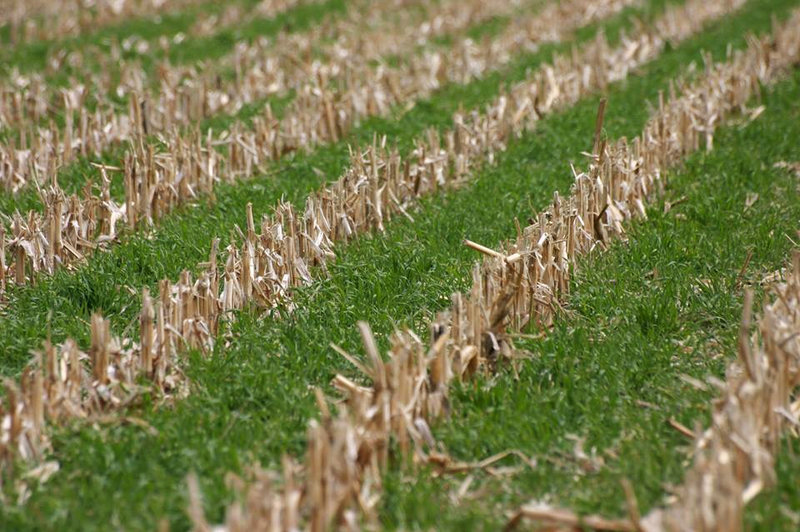Cover Crops and the 4Rs- Five Things to Know

Dr. Ken Staver knows a lot about cover crops. In a recent interview with the hosts of From Cloud to Cab, the Associate Research Scientist and Acting Director of the Wye Research and Education Center talked about his 30 years of research and how cover crops relate to soil health and the 4Rs- using the right nutrient source, rate, timing and placement. Here are five takeaways from that conversation:
- Delmarva’s water quality issues are unique. When Staver’s research began in the 1980s, erosion control was the focus of conservation efforts. When it became clear that nitrogen in shallow groundwater was a higher priority for our area, cover crops emerged as the right tool for the job. Cereal grains, like rye, were a good fit with our crop rotations to take up nitrogen left in the soil after harvest.
- Cover crops & nitrogen- it’s complicated. Can we reduce nitrogen fertilizer after a cover crop? After all, if we’re taking up nitrogen with the cover crop, shouldn’t it be possible to account for that in our nutrient management? It turns out, it’s not that simple. “There’s a large pool of nitrogen in the soil that cover crops get absorbed into”, Staver said. “Cover crops take up nitrogen that’s significant from a water quality standpoint, but it’s noise within the total supply of soil organic nitrogen.” In other words, not enough nitrogen comes back into the system from a cereal cover crop to count toward the next crop.
- No-till is key for building soil organic matter. Cereal cover crops do have some of the more persistent forms of organic carbon and so they can build soil organic matter over time. Tillage, though, will break down organic matter faster than cover crops can build it up. If your goal is to build soil organic matter, keep tillage to a minimum.
- Manure is a great resource, but has its challenges. A locally-available, slow-release nutrient source, manure contains macro- and micronutrients that feed both crops and soil microbes. It can’t, however, be applied with the same precision with regard to rate and timing as inorganic fertilizers.
- Take the long view. Planting cover crops consistently adds to soil carbon and nitrogen pools, and adopting practices that support a thriving soil microbial community will cycle those nutrients over time. In the long term, it might be possible to reduce the amount of nitrogen that’s added to the system. Decision support tools- Tissue Tests, PSNTs and Nitrogen Modeling- can help to fine-tune nitrogen applications by estimating crop needs and nitrogen supplied in a given season.
The full conversation is featured in an episode of From Cloud to Cab, a podcast series for Mid-Atlantic farmers. The series is hosted by Josh Bollinger with the Harry R. Hughes Center for Agroecology and Jennifer Nelson with Resource Smart LLC. Look for a new episode every other Wednesday- you can find it on Sound Cloud, iTunes and the Google Play Store.